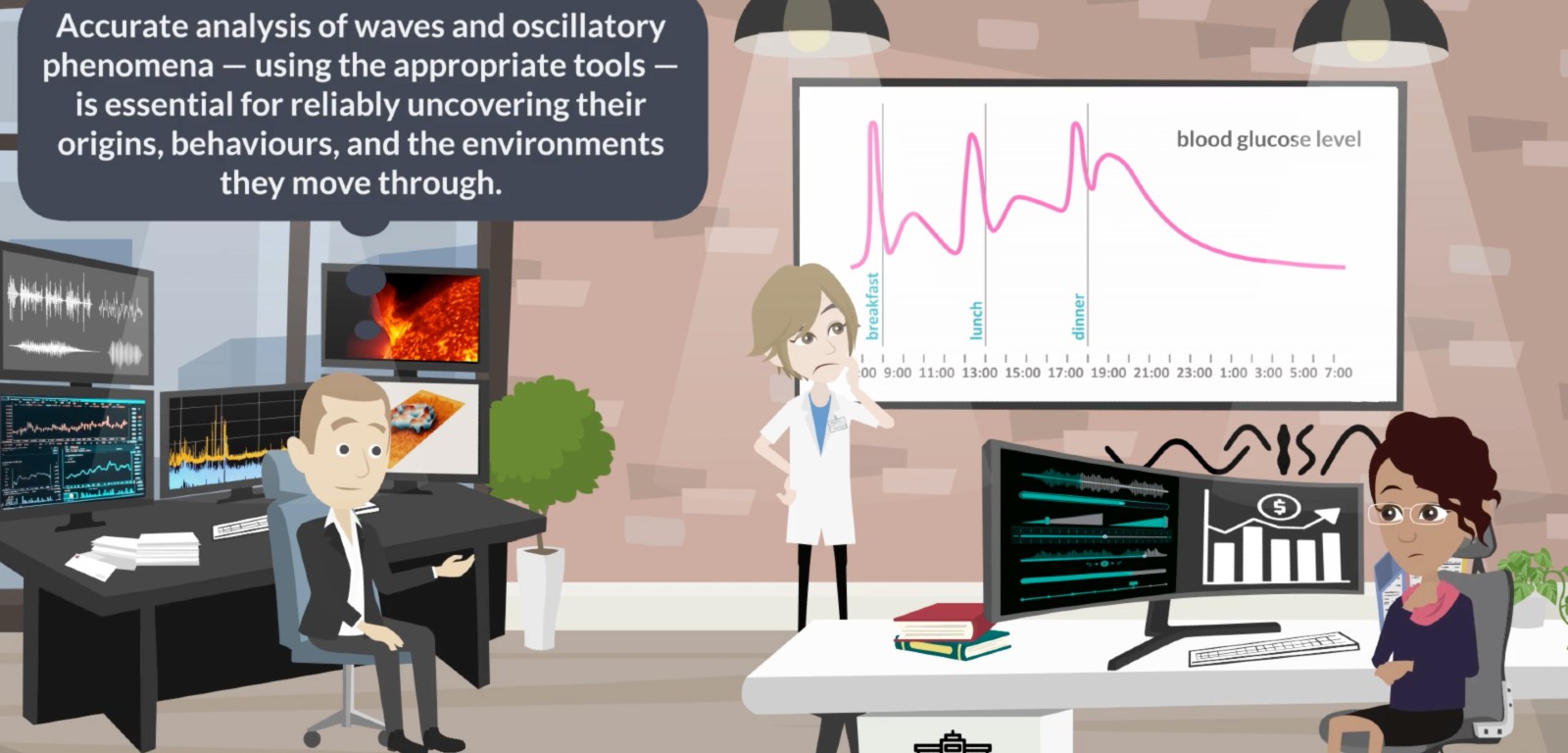Researchers collaborate on wave science for better, global outcomes
A pioneering new approach to ‘wave science’, aimed at improving outcomes across global healthcare, the environment, engineering and economics, has been published by a group of international researchers led by Queen’s University Belfast.

Applications could include improved early warnings for earthquakes, optimising renewable energies, advancing medical diagnostics as well as improving our fundamental understanding of the Universe.
The scientists come from a variety of backgrounds but they all study waves – whether that be waves in the ocean; waves that make up our mobile-phone networks; waves used in X-Ray machines and ultrasounds; or the seismic waves involved in earthquakes.
Despite the diversity of their individual disciplines, the scientists say that methodologies for wave analysis can be similar and scientists have a valuable opportunity to learn from each other and accelerate major developments, now that wave science underpins so much of our modern technology and society.
Publication
Wave Analysis Tools has been published in the high-impact journal Nature Reviews Methods Primers and is free to use by scientists anywhere in the world. It was compiled by 26 scientists from 23 institutes across nine countries, including Stanford University; the European Space Agency (USA campus); the Italian Space Agency; Niels Bohr Institute (Denmark); and the Max Planck Institute in Germany. It provides a comprehensive overview of a number of both fundamental and advanced tools for wave analysis, assessing the suitability of differing methodologies for different areas of science.
The group has also established an open-access repository called WaLSA.tools to help researchers access the latest discoveries, forge new partnerships and promote greater integration and ethics among the international wave-analysis community.
Applied Science
Waves move energy around and can be found everywhere in nature, from the smallest vibration of an insect’s wings to extreme-weather events and natural disasters; from the music we make to the rhythm of the tides and the wind. Geophysicists examine these natural oscillations to predict earthquakes and tsunamis, facilitate weather forecasting and monitor climate change.
But waves are also at the forefront of technology, increasingly central to our digital and physical infrastructure, astrophysics, energy, healthcare and even economics. A medical researcher will use wave analysis to interpret data from a patient, eg. heart activity from an electrocardiogram, while astrophysicists use comparable tools to explore life on a much larger scale, eg. space weather and its impact on human safety.
Technology
Engineers analyse vibrations in bridges, skyscrapers and aircraft to pinpoint weaknesses in structures while electronic engineers study oscillations in circuits to optimise systems for communications, power generation and gadgets.
Economists also use sophisticated forms of wave analysis to forecast financial trends and advise governments and businesses while environmental scientists rely on detailed analyses of sea waves, lightwaves from the Sun and wind patterns to develop effective renewable energies.
Lead author Dr Shahin Jafarzadeh from the Astrophysics Research Centre at Queen’s University Belfast, UK, said the purpose of the Nature Reviews Methods Primers publication was to have real impact on the world around us. He said:
“Properly analysing waves and oscillations is really important in multiple fields of scientific research. Wave signals can be incredibly complex and require much detailed analysis. Oversimplified or misapplied methods can lead to incomplete or misleading conclusions.
“This applies whether it’s observing magnetic waves in the Sun's atmosphere — which can influence space weather — or interpreting a graph of a patient’s blood-sugar levels. Using the right tools for the particular context is paramount.
“Unifying our approach across disciplines and nations should ensure more reliable and reproducible results.”
Professor David Jess, also from Queen’s University Belfast and another author of the Nature Reviews Methods Primers guide added:
“Bringing together 26 scientists from across 23 worldwide institutes ensures that our work in Nature Reviews reflects the current state-of-the-art in wave-analysis tools.
“Queen’s leadership in this project will help initiate new international collaborations that will improve the global understanding of wave phenomena spanning the smallest to the largest scales.”
A read-only copy of the full guide can be found at https://WaLSA.tools/nrmp with supplementary information at https://WaLSA.tools/nrmp-si.
An animation created to accompany the guide is available here: https://youtu.be/b_rG7Q8fyMU Credit: Dr Shahin Jafarzadeh.

Media
Media inquiries to Una Bradley u.bradley@qub.ac.uk